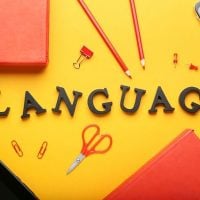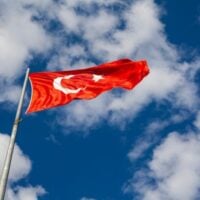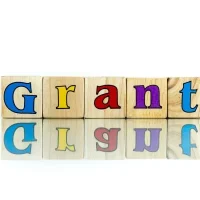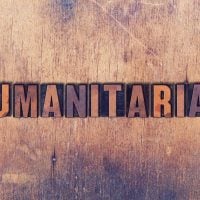Deadline: 8-Aug-23
Applications are now open for the Transport Heritage Grants Program, a NSW Government funded program, administered by the Royal Australian Historical Society (RAHS) and supported by Transport Heritage NSW (THNSW).
Objectives
- The Program aims to help the NSW community rediscover the culture, the events and the people that shaped transport in NSW over the past 170 years, as well as support the restoration and conservation of, and access to the valuable heritage assets (including buildings, rolling stock, vehicles, museum objects and collections).
- The Program runs on an annual basis to assist eligible organisations and individuals with mass transport related heritage activities.
Funding Information
- Grants will be assessed on their needs and merits; however, it is unlikely that grant amounts awarded would exceed $15,000 (GST inclusive).
- In exceptional cases, projects may be granted for larger amounts. It is advised that applicants discuss their application for a larger amount with RAHS prior to lodgement. The upper limit of funding available for any one project is $55,000 (GST inclusive) and a maximum of one grant of this size may be awarded each funding round.
- A maximum of two applications per applicant can be funded in each round.
Timeframe
- Grants will be awarded to cover a twelve-month period. It is expected that all grant activities will be undertaken during that period.
Eligible Projects
- Project Categories
- Restoration, reconstruction or preservation of a heritage transport item (available for eligible organisations only)
- This category comprises projects which directly involve the restoration and/or conservation of transport heritage assets (including buildings, rolling stock, vehicles, museum objects and collections) which are not eligible for other Government funding administered by THNSW.
- Priority will be given to projects involving assets with strong and significant links to the transport history of NSW.
- All necessary approvals to conduct the works must be acquired prior to submitting the application and relevant evidence provided.
- If the project relates to a heritage asset owned by the applicant, proof of ownership must be provided with the application.
- If the project relates to a heritage asset not owned by the applicant, it must be owned by a not-for-profit incorporated body or Government body.
- If the project relates to a heritage asset not owned by the applicant, the applicant must include evidence of approval from the owner to conduct works in line with that agreement.
- If the project relates to an operational asset, evidence of accreditation by the relevant regulator (e.g. National Rail Safety Regulator) must be provided.
- This category comprises projects which directly involve the restoration and/or conservation of transport heritage assets (including buildings, rolling stock, vehicles, museum objects and collections) which are not eligible for other Government funding administered by THNSW.
- Exhibition, interpretation, education or publication relating to heritage transport (available for eligible organisations only)
- This category comprises projects that involve educating the community about NSW transport heritage or the operation of transport heritage passenger services. Examples include:
- museum exhibitions;
- public programs;
- education programs;
- in vehicle commentary.
- Education programs must be developed in conjunction with education professionals, a letter of support from a local school and contribute to the curriculum.
- This category comprises projects that involve educating the community about NSW transport heritage or the operation of transport heritage passenger services. Examples include:
- Study, consultation, report or review that will assist in managing a heritage transport place or item in NSW or the ACT (available for eligible organisations and individuals)
- This category comprises conservation management plans, statements of significance and heritage management plans.
- Audience development, accessibility, and inclusion
- This category is for projects whose outcomes improve access to NSW transport heritage. Examples include:
- Temporary and/or permanent infrastructure, and/or building, precinct and asset works that will improve accessibility and inclusion for diverse audiences;
- Equipment that improves experience and access;
- Signage, guide and interpretative material for diverse audiences;
- Access supports and programming;
- Accessible online content.
- This category is for projects whose outcomes improve access to NSW transport heritage. Examples include:
- Restoration, reconstruction or preservation of a heritage transport item (available for eligible organisations only)
Eligibility Criteria
- Depending on the type of project, the following are eligible to apply for grants:
- Organisations: NSW or ACT based bodies corporate that are not-for-profit or charitable institutions with transport heritage and/or NSW heritage or history as their primary objective and purpose;
- Individuals: Members of Transport Heritage NSW. If applying for funds in the Restoration, reconstruction or preservation; Exhibition, interpretation, education or publication; or Audience development, accessibility and inclusion categories, individuals must apply in partnership with an eligible organisation.
- Applicants who have three or more current or outstanding grants on the closing date of the current round are not eligible to apply.
- Applicants with grant projects outstanding from more than one year ago must provide a progress report for that project with their application.
- Applications for smaller grants are encouraged.
Ineligible
- The following types of projects will not be funded under the program:
- projects with milestones that are deemed to be unviable for completion within the allocated timeframe;
- projects that present an unacceptable health or safety risk;
- projects relating to private road, water and air transport, i.e. cars, private yachts, or private planes track and infrastructure projects;
- retrospective funding for projects already completed or underway;
- travel expenses;
- training expenses;
- non-heritage activities, including: non-heritage commercial projects, display of nonheritage assets in museums, hire of museums for commercial activities, provision of uniforms.
For more information, visit RAHS.









































